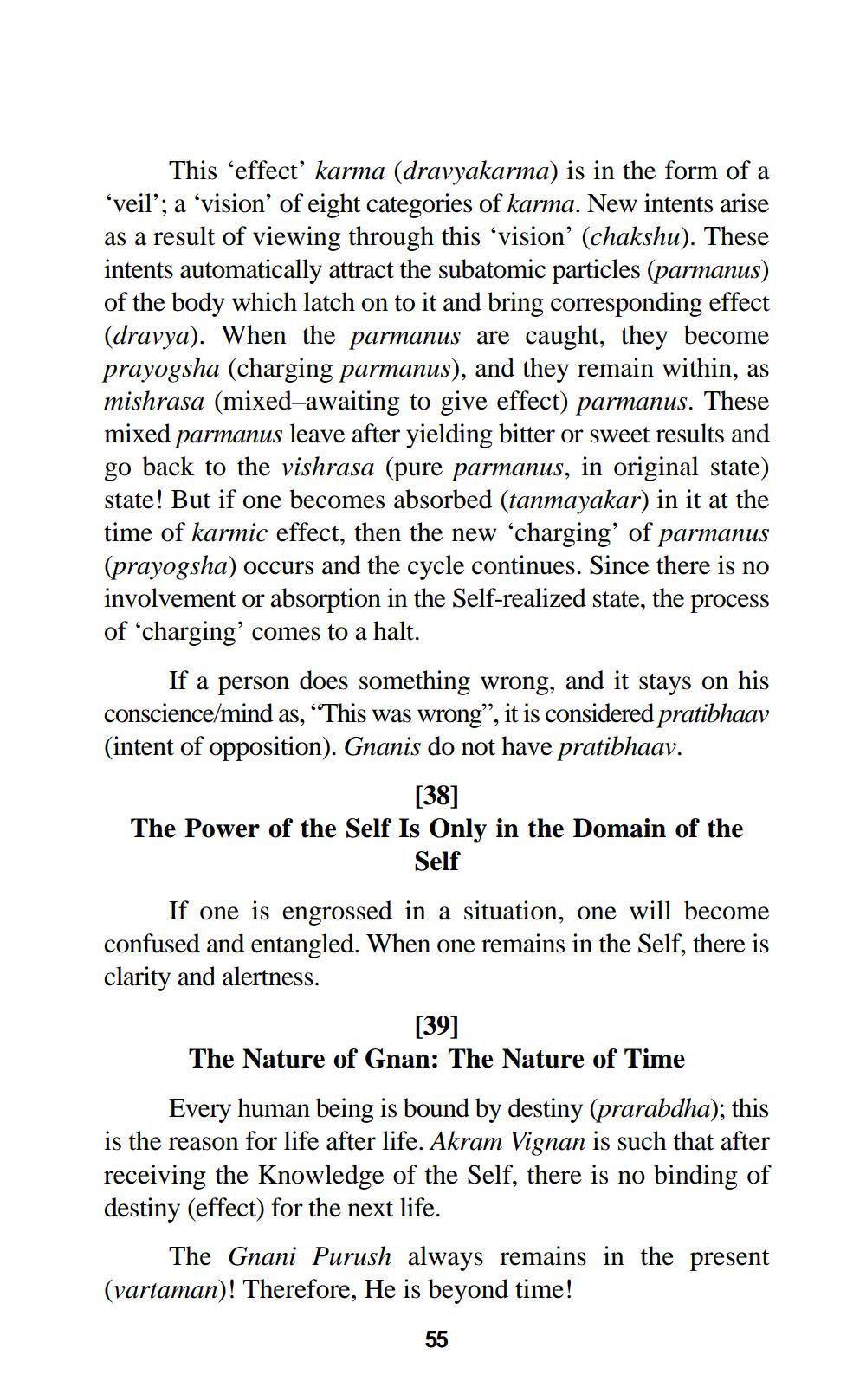________________
This effect' karma (dravyakarma) is in the form of a ‘veil’; a ‘vision' of eight categories of karma. New intents arise as a result of viewing through this ‘vision' (chakshu). These intents automatically attract the subatomic particles (parmanus) of the body which latch on to it and bring corresponding effect (dravya). When the parmanus are caught, they become prayogsha (charging parmanus), and they remain within, as mishrasa (mixed-awaiting to give effect) parmanus. These mixed parmanus leave after yielding bitter or sweet results and go back to the vishrasa (pure parmanus, in original state) state! But if one becomes absorbed (tanmayakar) in it at the time of karmic effect, then the new 'charging' of parmanus (prayogsha) occurs and the cycle continues. Since there is no involvement or absorption in the Self-realized state, the process of ‘charging comes to a halt.
If a person does something wrong, and it stays on his conscience/mind as, “This was wrong", it is considered pratibhaav (intent of opposition). Gnanis do not have pratibhaav.
[38] The Power of the Self Is Only in the Domain of the
Self
If one is engrossed in a situation, one will become confused and entangled. When one remains in the Self, there is clarity and alertness.
[39] The Nature of Gnan: The Nature of Time
Every human being is bound by destiny (prarabdha); this is the reason for life after life. Akram Vignan is such that after receiving the Knowledge of the Self, there is no binding of destiny (effect) for the next life.
The Gnani Purush always remains in the present (vartaman)! Therefore, He is beyond time!
55




